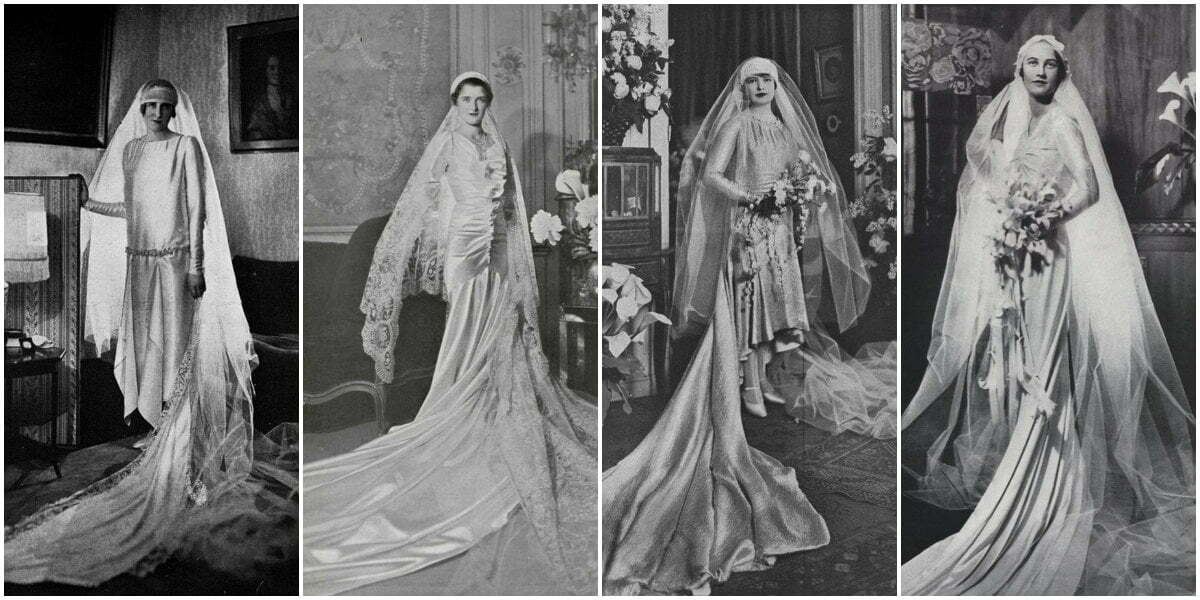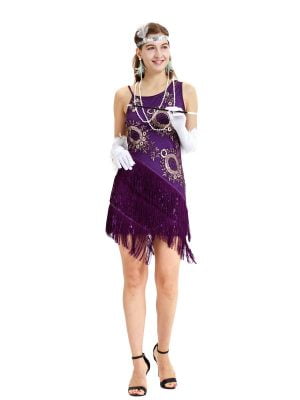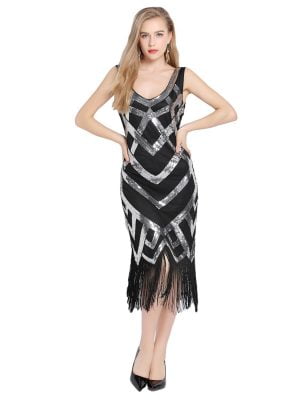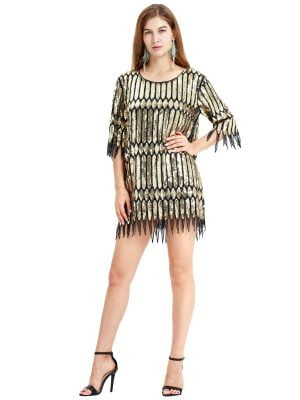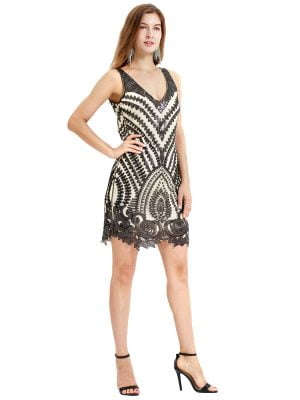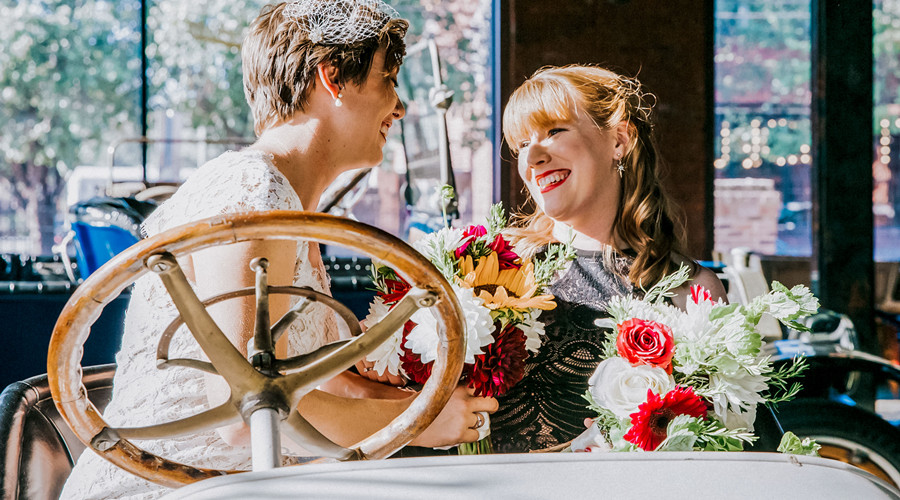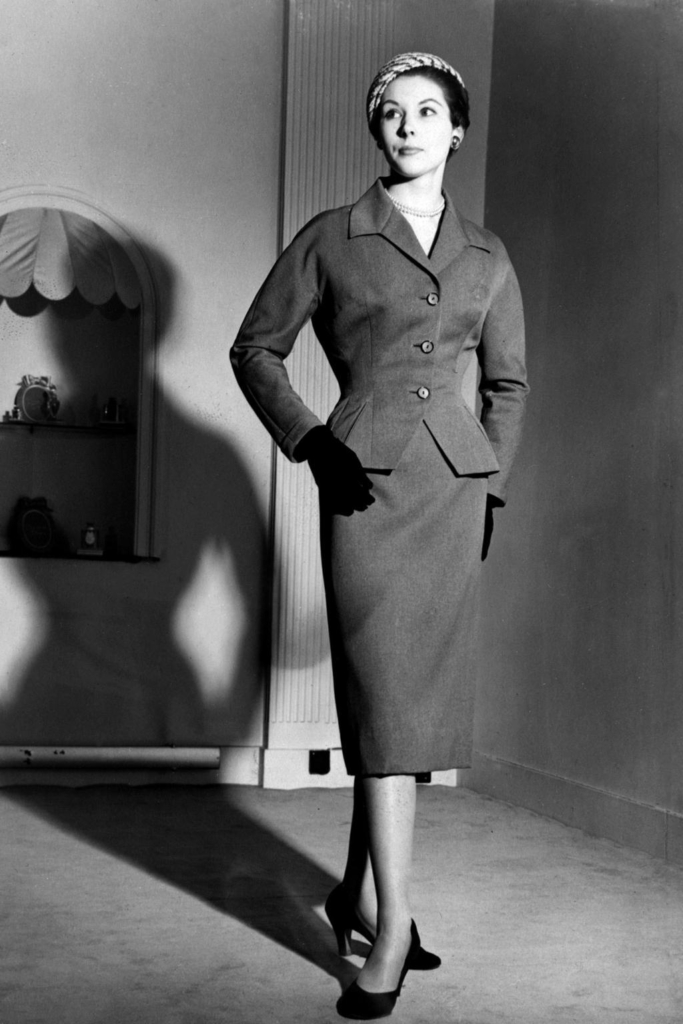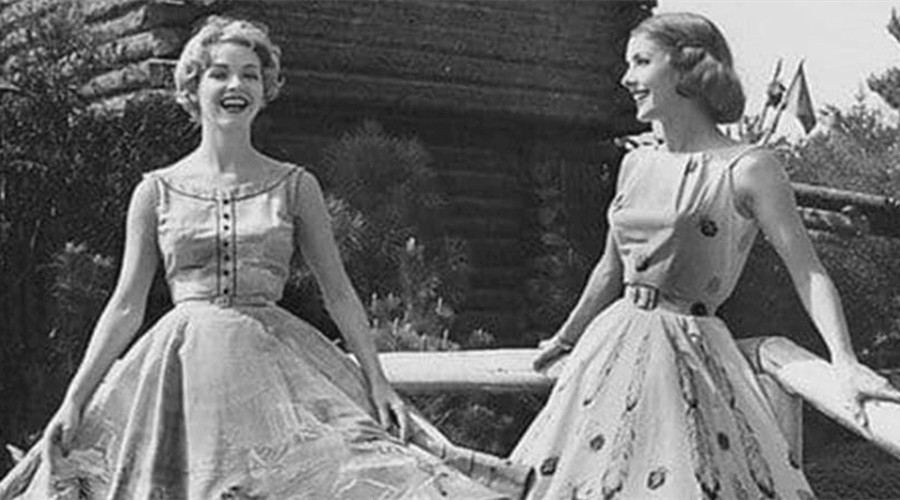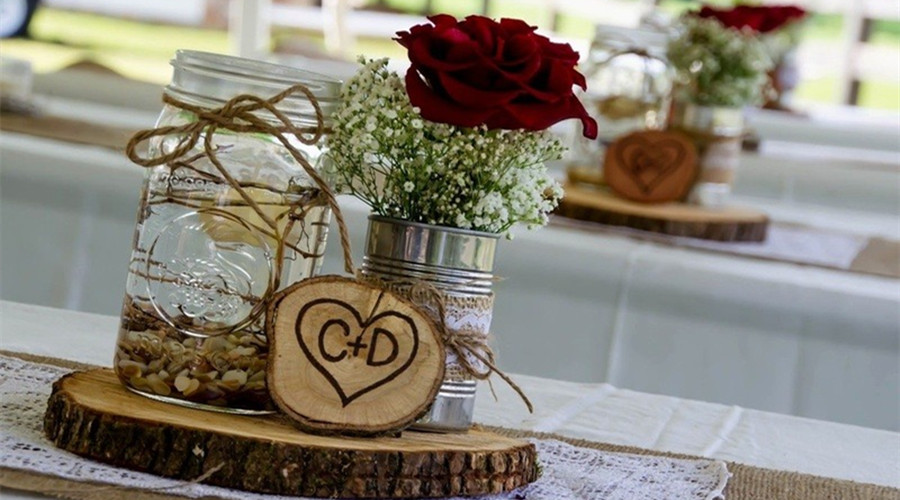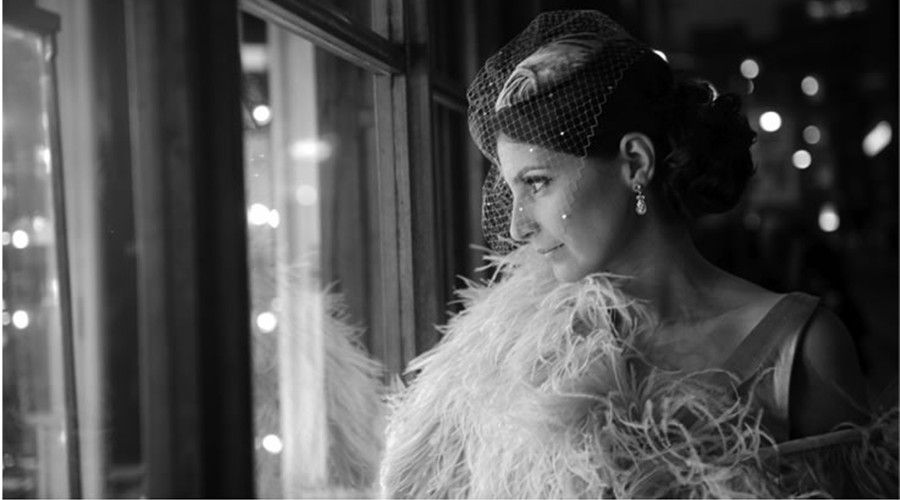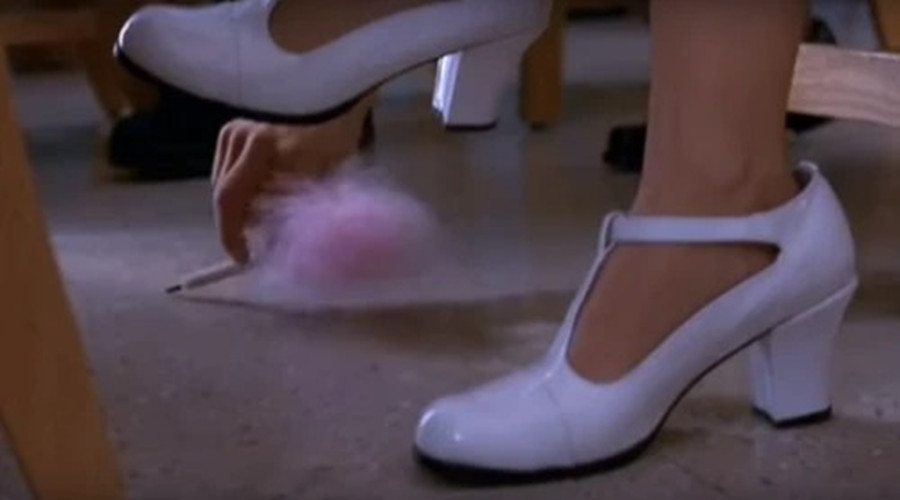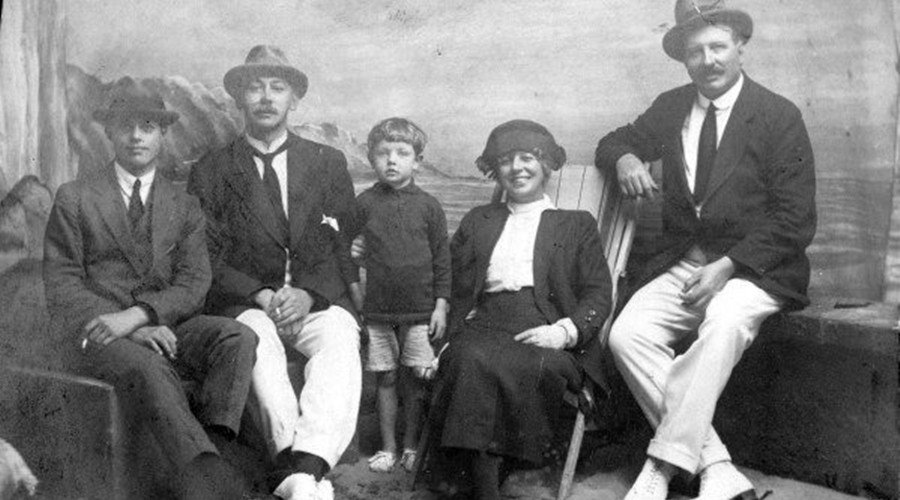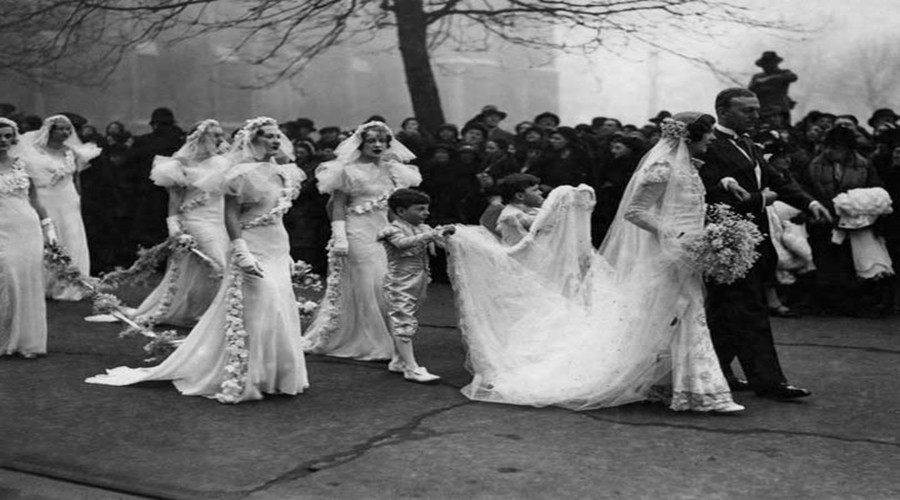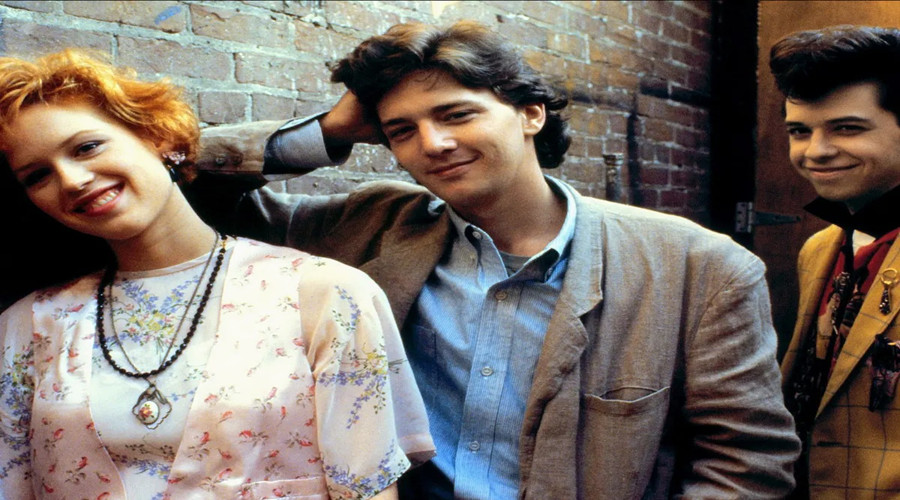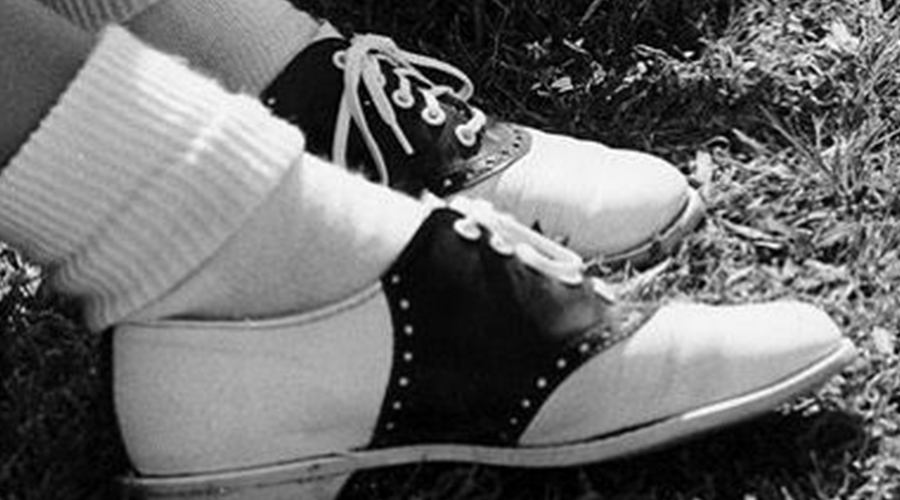Jazz music, nightclubs, flappers and wild parties are some lifestyle aspects peculiar to the 1920s. This is also the time when women clothing took a sudden shift from the tight corset style ball dresses to loose and shorter versions. Being the period right after World War I, change was not only witnessed in the manner in which people interacted but also in the clothes they wore. Roaring 20s fashion would also mean a different view of the wedding dress.
Fashion-wise speaking, the 1920s time period is split into two; the first half of this decade spells reservation where women chose to cover their bodies completely and shunned revealing cloth styles. The second half recorded a new perspective for new styles. The public began embracing less-conservative trends that became synonymous with the roaring 20s fashion. The new found trends would comprise of fashion for the rest of the decade until after 1931.
Picks for Flapper Girls
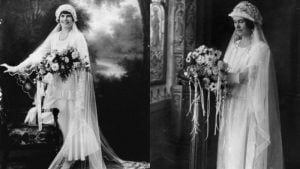
Ordinarily, the wedding dress is chosen to match with the preferences of the wearer and in most cases depicts social status. The process of acquiring a wedding dress today is quite straightforward. Those who can access a bridal shop simply walk in and fit the available styles. If nothing catches their interest, the internet is available to connect them with various vendors from around the world.
Back in the early 1900s, one would be able to guess the economic and social standing of a family just by looking at the wedding dress of their daughter. Obviously, wealthy parents spared nothing to make their daughter’s wedding memorable – wedding dresses were made with exclusive fabrics and in various colors.
When industrialization began, the western world became a ready market for cheaper but high quality fabric. This meant that people who wanted wedding dresses could afford classy pieces without having to spend a fortune. Such a wide variety existed that it made sense to have certain garments particularly reserved for festive occasions. As the world became interconnected through advanced communication channels, the media and a faster postal system, the latest fashion trends emerging in one corner would easily spread.
By the 1920s, women had gotten tired of wearing restrictive clothes which were extravagant in the amount of fabric used. Most women were eager to switch their Victorian and Edwardian era gowns for looser attire that did not cover their bodies in entirety. The 1920s style wedding dress was typically short and the front hem was a different color from the back hem. The style generally meant that the front of the dress was shorter than the back which featured a train. The wedding attire could never be considered complete without a wedding veil or cloche-style hat.
The color of the 1920s wedding dress
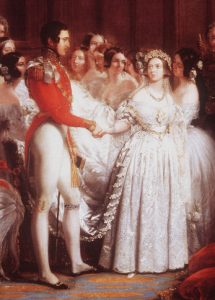 Before the dawn of the Victorian era, a bride was free to choose any color of wedding dress. Actually, black was quite popular up to 1840, when Queen Victoria married Albert while wearing a white gown with Honiton lace trims. Since the wedding was basically a public affair, illustrations of the event would be seen by many people. It is no wonder that brides who married around the early 1900s opted for white gowns. Still, that did not deter those who wanted to exercise their choice of color to do so. For this special day, many brides included decorations, frills and lace in their wedding gown designs.
Before the dawn of the Victorian era, a bride was free to choose any color of wedding dress. Actually, black was quite popular up to 1840, when Queen Victoria married Albert while wearing a white gown with Honiton lace trims. Since the wedding was basically a public affair, illustrations of the event would be seen by many people. It is no wonder that brides who married around the early 1900s opted for white gowns. Still, that did not deter those who wanted to exercise their choice of color to do so. For this special day, many brides included decorations, frills and lace in their wedding gown designs.
20s Wedding dress accessories
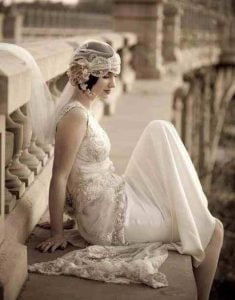 The wedding dress of the 1920s looked special but it required much more to complement its beauty. On the head for instance, brides wore headbands or glitzy accessories on which the veil would be pinned. Just like many prefer today, simple but comfortable shoes like pumps or Mary Janes in matching colors with the head gear were preferred.
The wedding dress of the 1920s looked special but it required much more to complement its beauty. On the head for instance, brides wore headbands or glitzy accessories on which the veil would be pinned. Just like many prefer today, simple but comfortable shoes like pumps or Mary Janes in matching colors with the head gear were preferred.
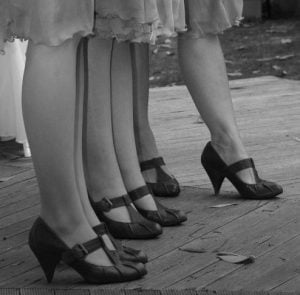
The roaring 20s fashion was liberating for the woman who wished to express herself. By this time the 1920s style wedding dress was a perfect outfit because weddings had evolved to incorporate dancing. While the bride yearned to look stunning on her big day, the loose and straight cuts of female attire provided unparalleled comfort. For a picture-perfect wedding picture from the 1920s, imagine a bride wearing a wedding dress with a blouson top; with a full lace skirt of calf length.

